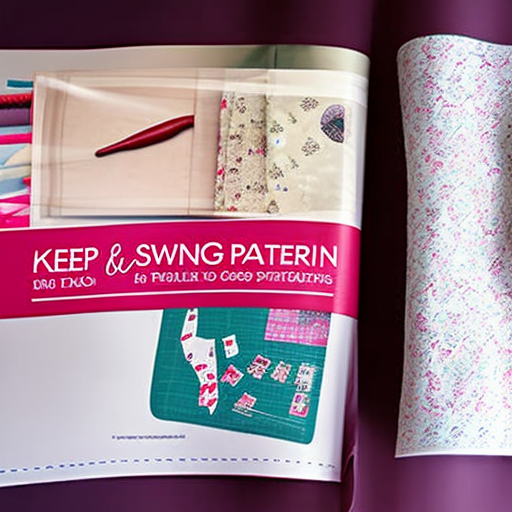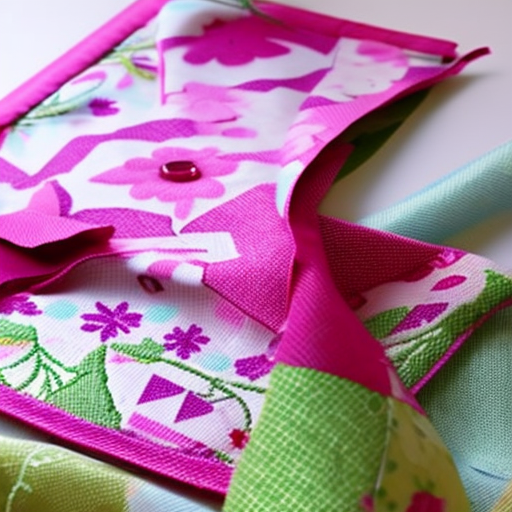
sewing-patterns.jpg” alt=”Sewing Patterns”>
As a sewing enthusiast, collecting and organizing sewing patterns can become a delightful hobby. Whether you are a seasoned seamstress or a beginner seamster, keeping your sewing patterns well-maintained is essential for easy access and reuse. Here are some tips on how to keep your sewing patterns organized and in good condition.
1. Store Patterns in Protective Sleeves or Envelopes
Using protective sleeves or envelopes is an excellent way to keep sewing patterns safe from dust, moisture, and other potential damage. You can find clear plastic sleeves or resealable envelopes specifically designed for storing sewing patterns. These sleeves allow you to view the pattern and protect it at the same time.
2. Label and Categorize Patterns
Labeling and categorizing your sewing patterns will make it easier to locate a specific pattern when you need it. Consider sorting them by type (e.g., tops, dresses, pants), size range, or even by complexity level. Use adhesive labels or create your own with colorful cardstock and decorative washi tape for a personalized touch.
3. Create a Dedicated Pattern Storage Area
Designate a specific space in your sewing room or closet for storing your sewing patterns. Install shelves, cubbies, or storage boxes to ensure each pattern has a proper place. Avoid stacking them too tightly, as it can damage the patterns or make them harder to retrieve. Keep your storage area clean and organized for easy browsing.
4. Make Digital Backups
In this digital age, it’s always a good idea to create digital backups of your most cherished sewing patterns. Scan or photograph each pattern, saving them as PDFs or image files. This way, you can access your patterns even if the physical copies get misplaced. Store the digital files on your computer, external hard drive, or cloud storage for extra security.
5. Take Notes and Record Modifications
When working on a sewing project, make notes on your pattern regarding alterations, adjustments, or personal preferences. These notes will guide you during future projects and avoid repetitive fitting issues. Use colored pens or highlighters to mark specific areas or changes directly on the pattern pieces.
6. Share and Donate Patterns
Consider sharing your sewing patterns with fellow sewing enthusiasts or donating them to sewing groups, libraries, or charity organizations. Sharing patterns not only creates a sense of community but also gives others the opportunity to enjoy your favorite designs. You can also explore pattern swaps or online platforms dedicated to pattern exchange.
Keeping your sewing patterns organized and well-preserved not only saves you time but also ensures that your collection remains in good condition. Follow these tips, get creative with your organization system, and enjoy the delightful art of sewing!





Good information! Great advice!
If you’re looking to build up an impressive wardrobe, investing in sewing patterns is the way to go. Sewing patterns can provide inspiration, guidance, and a creative outlet while learning a new skill. This post offers great tips on how to store and organize sewing patterns so they are readily available for future projects!
A must-read for sewers! A great resource for those just starting out too!
This post is a valuable resource for all levels of sewing experience – from beginners just getting started to experienced sewers. With the tips provided, you will be able to keep your sewing patterns properly stored and organized, so you can easily access them whenever you have an idea for a new project!
Such a useful guide! Storing patterns correctly will definitely extend their life.
Super helpful! With these tips, my sewing projects will be easier to organize.
An informative post indeed! Keepingup with sewing patterns is essential for any sewer, so this guide is a great place to start.
Extremely helpful tips! Keeping sewing patterns organized is key to creating more and more projects.
An absolutely invaluable guide! These tips will keep sewing patterns in perfect condition for years to come.